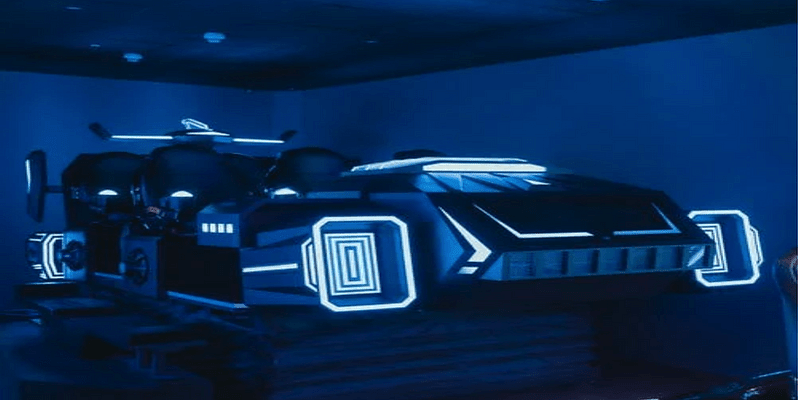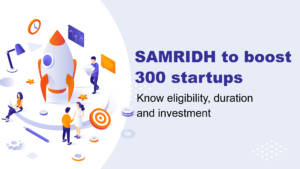In the contemporary world, innovations are rapidly transforming every industry, and the automotive industry is no exception. Innovations and adoptions are setting new trends in the century-old automotive ecosystem, which has undergone a drastic change. There is no exaggeration in saying that new vehicles will be more like a computer or smartphone on four wheels.
The pace of modern production is staggering. Commenting on this, Ashutosh Padhi, Senior Partner at McKinsey, says: “The automotive industry will see more disruption in the next ten years than it has seen in the last fifty years. And it’s not only about [the] head unit of a car. It’s also about [the] production process and it’s up to market time”.
Environment friendliness may arguably be the most important benefit of new trends and innovations in the automotive industry by way of low emissions, bringing in orderliness on roads, reducing accidents etc.
PwC has coined an acronym ‘eascy’ in one of their studies, which if expanded, is ‘electrified, autonomous, shared, connected and yearly updated’.
Let us take a look at the emerging trends and innovations in the automotive segment from three perspectives: the manufacturer, the society, and the user.
Electric Vehicles (AV)
The concept of electric vehicles has been there for some time, with companies like Tesla making great strides in this segment. With the future of fossil fuel looking bleak, electric vehicles (EV) is the ideal fuel alternative and the world’s environmental roadmap to zero-emission.
However, EV per se is not the solution. This solution is not just about going electric because 90 percent of electricity in the world is produced using coal, which only results in shifting pollution from one source to another. In order to follow the zero-emission path, EV must be running on renewable energy sources like solar energy.
In short, for greater adoption, EVs need to address issues such as high price, poor battery, inadequate charging infrastructure, fleet electrification, as well as powering renewable energy-based charging grids and self-charging solar mounting.
Autonomous or self-driving vehicles
Self-driving cars will be a game-changer. It will change the way we have been using automotive vehicles for about 100 years. Technologies like IoT, AI (Artificial Intelligence), AR (Augmented Reality), and other tools are leveraged to roll out autonomous vehicles, which seemed a utopian concept until recently.
Tesla, Google, and Uber are playing a big role in making autonomous vehicles a reality. The autonomous vehicle market is estimated to grow at a fast pace and investments will likely continue to pour in, especially in the development of further applications. This will completely redefine the use of individual mobility platforms and will bring revolutionary changes in technology, society, governmental systems, and human behaviour.
Fleets of AVs expand the scope of last-mile deliveries, reduce downtime, and aim to make public transportation relatively smooth and safer. AVs are equipped with advanced recognition technologies such as AI-enhanced computer vision to identify obstacles along the route helping in, for example, reducing accidents caused due to driver fatigue or negligence.
Shared vehicles
In both car-sharing and ride-hailing, vehicles don’t need a driver. However, in terms of the business model, while car-sharing users choose a particular product brand for a particular vehicle, ride-hailing users are interested in a particular transport service and not in the vehicle as a product.
Though it may not strictly come under this discussion, CaaS (car-as-a-service) or Maas (mobility-as-a-service) is another trend emerging in the automotive ecosystem. CaaS or Maas is a subscription model which itself is an improvement on the already practised leasing model.
However, the main advantage of CaaS or MaaS are that the user has the flexibility to change or upgrade the car as and when they need it. This will be the model which is apt for those looking for car-sharing. MaaS and CaaS discourage unused vehicles. Such solutions meet the requirements of a city or a business without adding new vehicles, thus reducing waiting time for fleets and pollution caused by petrol or diesel vehicles and also converting capex to opex.
Connected vehicles
KPMG has named digitalisation and connectivity among the key trends changing the future of driving. It seems that 5G technology will facilitate this soon.
Networking of vehicles with the outside world is the concept of the Connected Car. It can be networking, using 5G technology, with other vehicles or with traffic systems, or the vehicle occupants with the outside world. This is where all kinds of new technology tools come together to play a pivotal role in creating a new and improved user experience.
The new high-end vehicles come with a tamper-proof digital identity that differentiates them from traditional vehicles in the network. This also enables easy tracking of vehicular data for various use cases such as traffic system, governmental data, insurance, driver safety, predictive maintenance, and fleet management. Sharing vehicular data helps not just the individual customer, but the entire mobility ecosystem.
Artificial Intelligence (AI)
Artificial intelligence technologies such as machine learning, deep learning, and computer vision find applications in robotic automation within the automotive industry. These technologies guide self-driving cars, manage fleets, assist drivers to improve safety, and improve services such as vehicle maintenance, inspection or insurance. AI also finds applications in smart automotive manufacturing, where it accelerates the rate of production and helps reduce costs.
Big data and data analytics
In the age of big data, advanced data analytics supports various decisions throughout the lifecycle of a vehicle. Data gathered from vehicles enables predictive maintenance, informs managers about their fleets, and alerts concerned authorities in case of accidents. Moreover, customer automotive data finds applications in driving sales, optimising supply chains, and enhancing product design for newer vehicles.
Human-Machine Interface
As self-driving cars and connected cars transform the automotive landscape, it will fundamentally change how drivers interact with vehicles using human-machine interfaces (HMI) such as voice-based or haptic feedback and virtual assistants to operate vehicles. The control that driver has over the vehicle through such interfaces makes the driving experience safer and more enjoyable.
Blockchain
Blockchain finds multiple applications by way of sharing vehicle data over a secure network for connectivity and shared mobility solutions such as ride-hailing, urban transportation, and deliveries. Moreover, it finds application in verifying the supply chain of spare parts or making sure that the raw materials and spare parts are sourced exclusively from approved and authorised sources.
Additive manufacturing
For manufacturers, 3D printing helps the automotive industry in three primary ways.
Firstly, it enables rapid prototyping with 3D printed models that accelerate the design and testing phases of production. Secondly, it allows manufacturers to print spare parts to match their requirements. Lastly, additive manufacturing of composite materials leads to automotive parts that are lighter, stronger, and more durable.
Internet of Things (IoT)
In the automotive industry, IoT enables secure communication between vehicles as well as vehicles and traffic infrastructure. The technology improves road safety, solves traffic congestion, and reduces pollution and energy expenditure with better fleet management.
Startups and emerging companies develop advanced sensing technologies to gather more data about the vehicle as well as allow the vehicle to understand its surroundings. The technology also automates payments for fuel, services, and tolls.
Yearly-updated vehicles
The concepts of electrified, autonomous, connected and shared will lead to a rapid increase in the rate of innovation within the automotive industry. Model vehicles of five to eight years will be a thing of the past in this sector, as new vehicles will not just be about the hardware but more about the software.
The range of models will be updated, say, annually to integrate the latest hardware and software developments to the existing models as is done in computers and smartphones. As customers naturally cannot afford to buy a new vehicle every year due to the high purchase costs, the short innovation cycles will enter the market primarily through regular upgrades of existing vehicles.
Opportunities for startups
The above-mentioned trends and innovations driven primarily by Industry 4.0 solutions and tools open up a plethora of opportunities for tech startups.
- The automotive technology startup Gluon establishes an interconnected network of vehicles, offering diagnostics, monitoring, software performance tuning, fleet management, and blockchain payment solutions. Their app allows businesses to connect their vehicles with manufacturers, part suppliers, repair shops, and other service providers within the network.
- Israeli Autotalks is a semiconductor company devoted to vehicle-to-vehicle communications. The startup develops chipsets that link vehicles to each other as well as to infrastructure to enable data sharing between all of them, addressing key challenges: communication reliability, security, positioning accuracy, and vehicle installation.
- Aurora, the autonomous car tech startup, designs software and hardware for self-driving vehicles. The company offers the “full-stack” needed to deploy level four autonomous systems from sensor packages to software and data services.
- Oryx, another startup, develops a sensor system that enables vehicles to get a rich, precise and long-range view of their surroundings. The Israeli startup claims their low-cost coherent LiDAR achieves the depth vision performance required for autonomous driving, has a better signal-to-noise ratio than scanning systems, and produces both range and velocity data for each point in its field of view.
- Startup German Autolabs is building Chris, a digital AI assistant for drivers with advanced natural language capabilities and gesture recognition technology. The combination of an interoperable, scalable software platform for cognitive assistance with a retrofit hardware device aims to democratise the latest connected car technology.
- The Otonomo Connected Car Data Marketplace is a dedicated platform for the secure exchange of connected car data between data providers and service providers. The Israeli startup works with data providers, such as vehicle OEMs, and data consumers, including other service providers, making it easy for ecosystem partners to work with connected car data by translating it into a standardised form.
- Swiss startup Wayray develops holographic AR technologies for connected vehicles. With its augmented reality navigation system, drivers can see route-related information, emergency alerts and personalised content information on the windshield.
- CyberCar is developing a blockchain-optimised connected vehicle platform. The startup captures and signs vehicle data at the source and stores the associated notary and signature values in an immutable blockchain.
- Startup Divergent 3D incorporates 3D printed joints (NODE™) to connect carbon fibre structural materials, resulting in an industrial-strength chassis that can be assembled in a matter of minutes.
- Israeli startup, StoreDot, uses a unique multifunction electrode (MFE). StoreDot’s fast-charging electric vehicle battery (“FlashBattery”) combines two benefits of energy storage solutions by incorporating high-power, rapid-charging rate capability with high-energy storage ability. FlashBattery is capable of charging a vehicle within five minutes thereby preparing it for roughly 480-km travel.
(Disclaimer: The views and opinions expressed in this article are those of the author and do not necessarily reflect the views of YourStory.)










